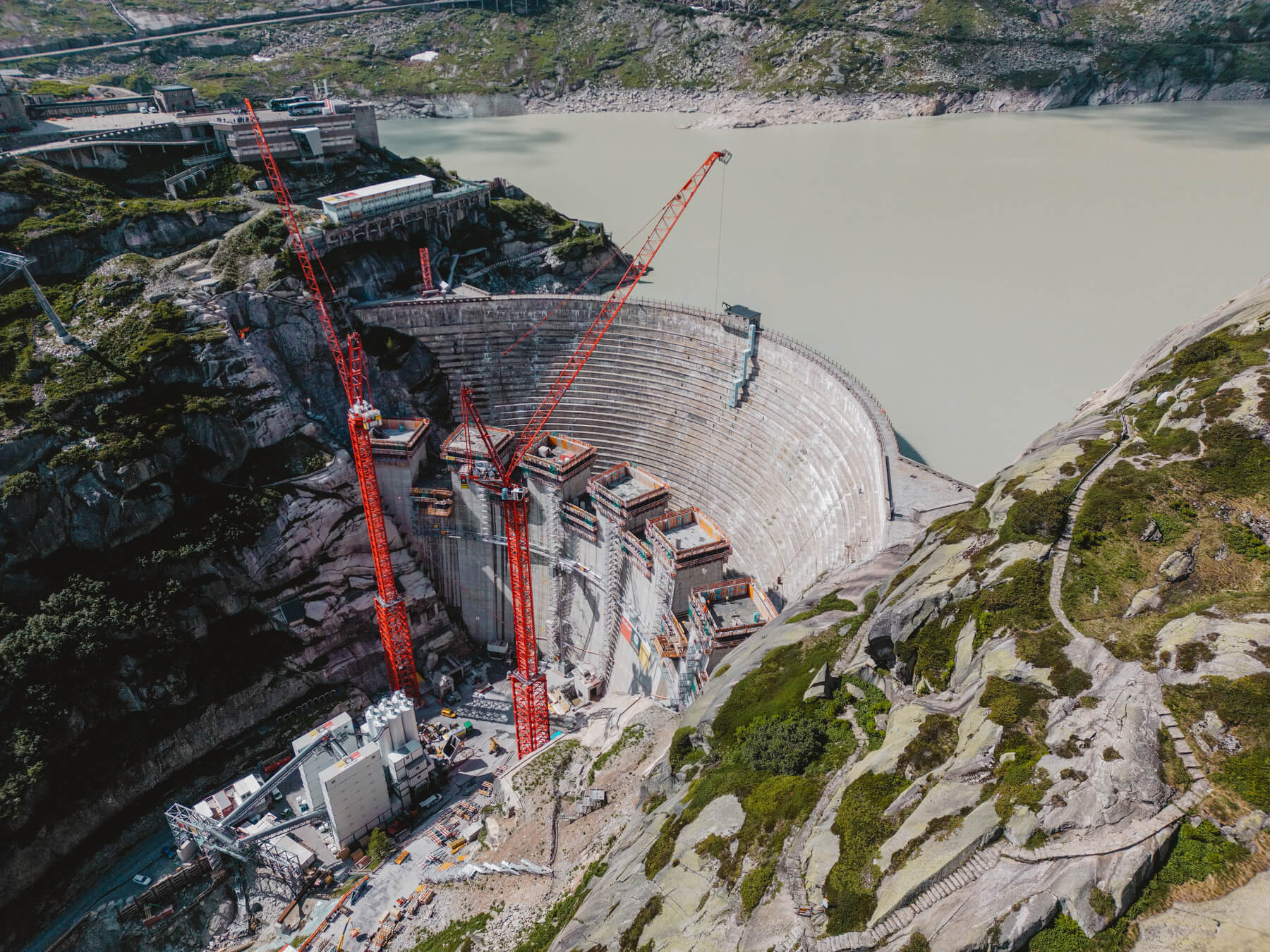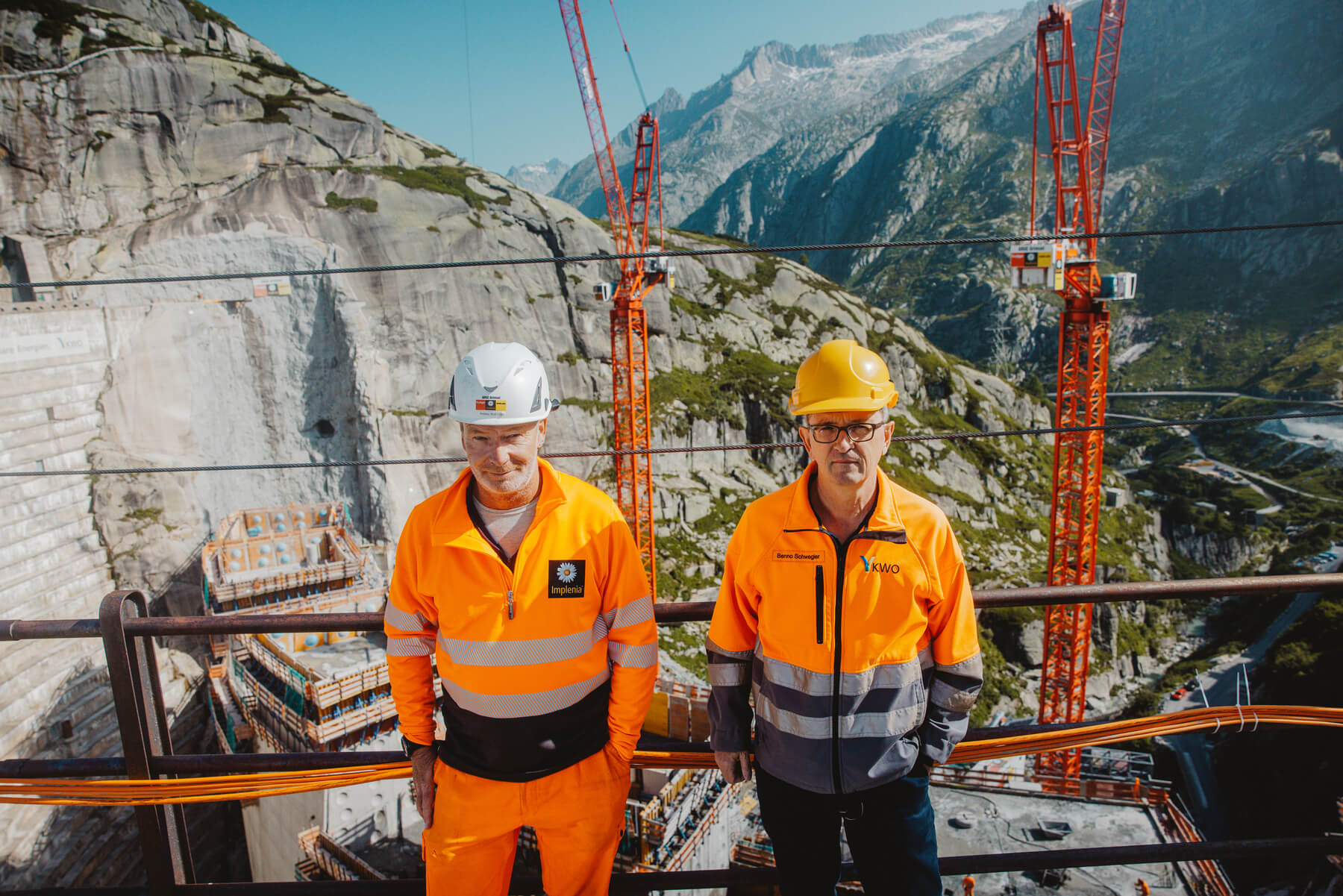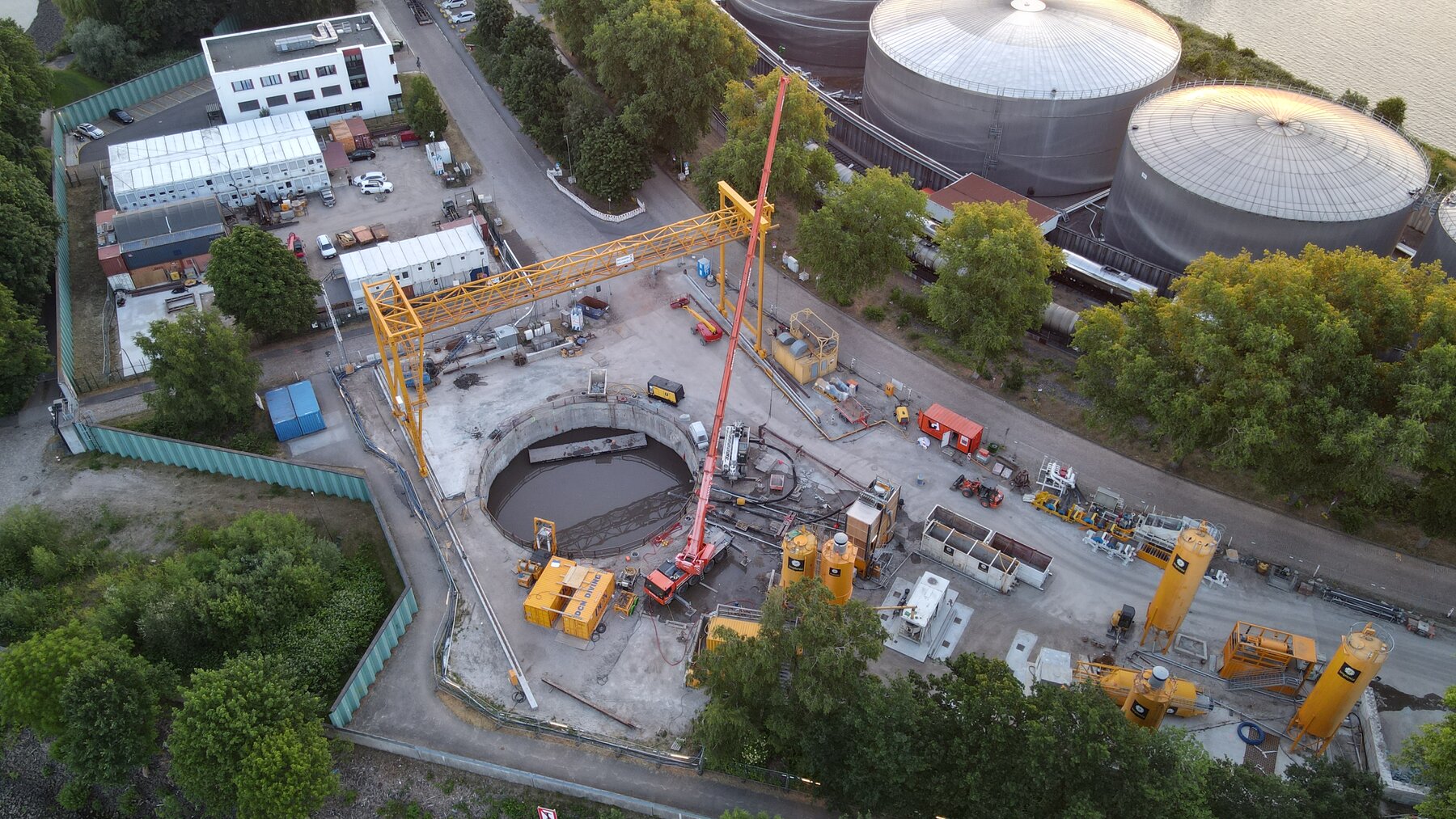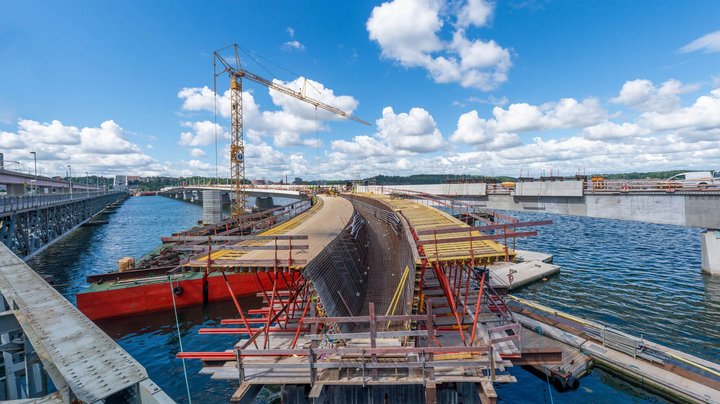Energy infrastructure for future generations
Large dams are not built very often in Switzerland anymore - the Spitallamm dam on the Grimsel, is one of these few. It will replace the existing 90-year-old dam.
Construction of the Spitallamm replacement dam
Kraftwerke Oberhasli AG will replace the existing dam with a new one from 2019 to 2025. The old wall is in need of renovation, but it will be retained and flooded at a later date. With the replacement of the Spitallamm wall, the KWO ensures that the water from Lake Grimsel can be used for electricity production without restriction in the long term.

For this project at just under 2,000 meters above sea level, the construction season is short. In the winter months, meticulous planning is carried out so that the project can then be implemented efficiently and exactly according to plan from May to October. This means an intensive workload for the teams on site.
With such a tight schedule, any time savings are welcome. For example, the aggregates and concrete for the dam are produced on site. This enables continuous construction production without long transport routes, and is faster, cheaper and, above all, more sustainable, as project manager Andres Rüegg points out.
"The project is exciting with different construction phases over the entire construction period," explains the experienced engineer. "We have installation work, rock removal work, the construction of the dam. In addition, there is underground work and, in the final phase, injection work on the dam wall. With our years of experience in infrastructure construction, we are well positioned to tackle the many challenges this complex project presents."
The client takes a similar view. Benno Schwegler, project manager at KWO (Kraftwerke Oberhasli), emphasizes, "Replacing this existing wall with a new arch dam is a complex project and requires finding special solutions. What you plan must also be able to be implemented on the construction site. It is therefore important that everyone understands the complexity and acts accordingly. Thanks to the great commitment and dedication of those involved, the project can be completed on schedule and the high quality requirements can be met.

District heating for Hamburg
Hamburg is also building its energy infrastructure. In the future, a decentralized heating network will use climate-neutral waste heat from various sources. The waste heat is generated in a waste recycling plant, a sewage treatment plant and other industrial operations south of the Elbe, among other places. To reach consumers north of the Elbe, Implenia is building a tunnel under the Elbe on behalf of Hamburger Energiewerke.
Dirk Lassen-Petersen, project manager at the client, explains: "We at Hamburger Energiewerke have a mission to shape the heat transition in Hamburg. There was a large EU tender with high demands on the bidders. And in this highly competitive environment, Implenia won in the end."
Construction of the district heating tunnel under the Elbe River.
Implenia's specialist civil engineering team is creating diaphragm walls with a depth of up to 42 meters for the start and target shafts. Between the two shafts, a tunnel boring machine will be used to bore a 1.16-kilometer-long tunnel with a diameter of approximately 4.5 meters, which will be lined with precast concrete elements. In the two shafts, accesses and operating facilities are being built for later operation. The installations of the technical building equipment and the district heating pipeline with supply and return lines are also part of the contract.

Since then, the team around project manager Andrés Guevara Kluxen has been working on a huge infrastructure project, which he describes as follows: "We are building a tunnel almost 1.2 kilometers long. At the moment, we are excavating the shaft, which has a diameter of 24 meters and a total depth of around 30 meters."
The particular challenge of this project is, on the one hand, the geology: the ice-age deposits pose major challenges for tunnel driving in principle. For example, drilling crews sometimes come across large boulders that can be dangerous for machines. Another special feature is the water pressure 45 meters below the waterline, which would weigh on the system in the event of a leak and to which all systems must therefore be geared.
But coordinating the various trades is also challenging. "A tunneling project like this one is particularly complex. We don't just have tunneling here, we also have special civil engineering and structural engineering. Only if the entire team meshes like a gearbox will we be successful here," says Andrés Guevara Kluxen.
The client also emphasizes the importance of communication and cooperation between all parties involved. Dirk Lassen-Petersen: "Tunnel construction is characterized by obstacles. Things often turn out differently than you think. This requires open communication. We maintain this here with Implenia in order to move the whole thing forward as partners."
As Andrés Guevara Kluxen emphasizes, it is precisely this exchange that is working excellently on this challenging project: "We exchange ideas transparently and find solutions together. If you want to successfully manage such a mammoth task, that's the only way to do it."
The good cooperation is a pleasure. The exciting work, too: "Once you're infected with the tunneling virus, you don't want to do anything else!" jokes Andrés Guevara Kluxen. And then there's the awareness of creating something meaningful, which inspires the entire team, as he points out: "By helping to build a sustainable energy infrastructure, we're helping to preserve the world for future generations."



